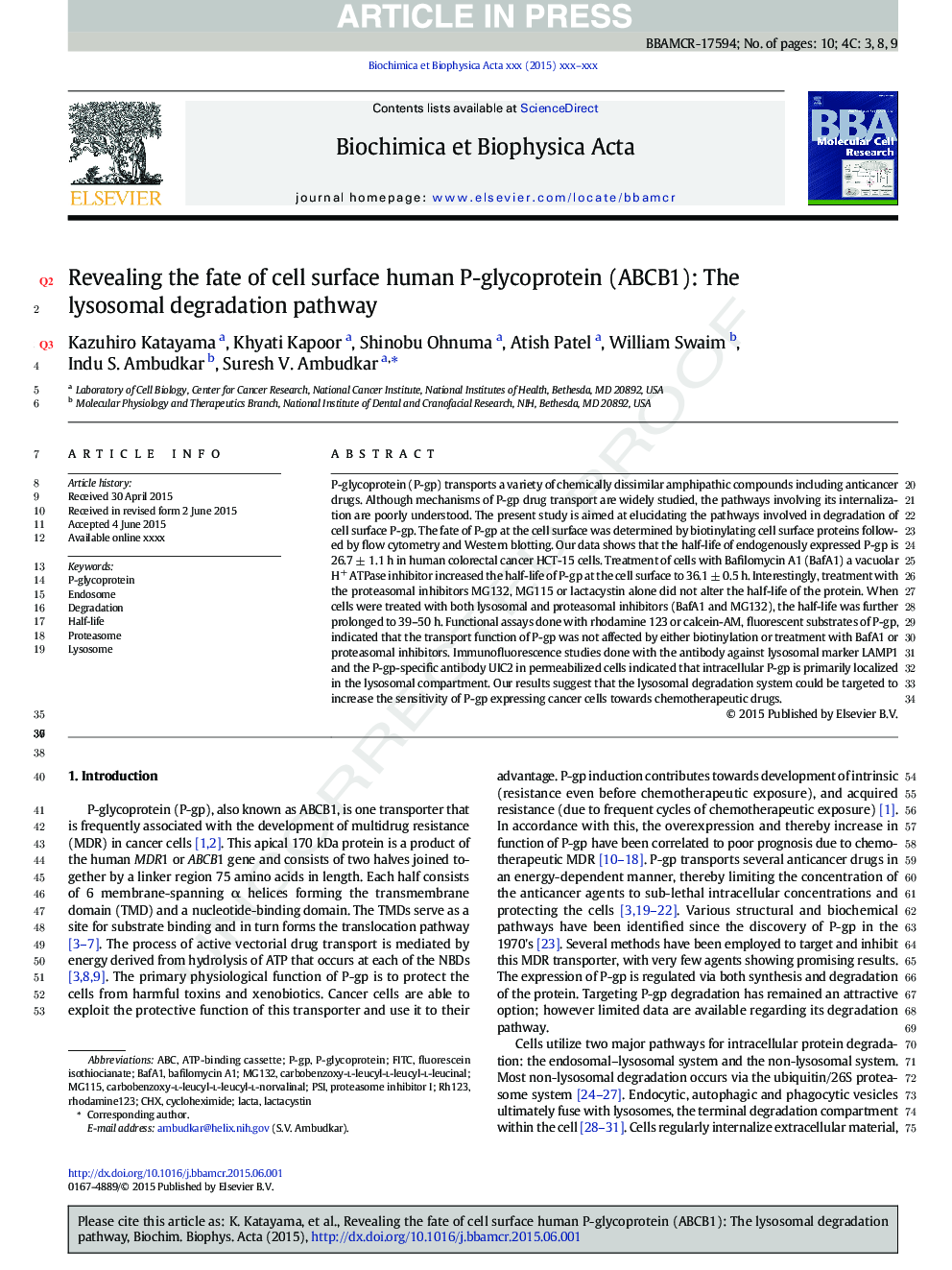| Article ID | Journal | Published Year | Pages | File Type |
|---|---|---|---|---|
| 10801936 | Biochimica et Biophysica Acta (BBA) - Molecular Cell Research | 2015 | 10 Pages |
Abstract
P-glycoprotein (P-gp) transports a variety of chemically dissimilar amphipathic compounds including anticancer drugs. Although mechanisms of P-gp drug transport are widely studied, the pathways involving its internalization are poorly understood. The present study is aimed at elucidating the pathways involved in degradation of cell surface P-gp. The fate of P-gp at the cell surface was determined by biotinylating cell surface proteins followed by flow cytometry and Western blotting. Our data shows that the half-life of endogenously expressed P-gp is 26.7 ± 1.1 h in human colorectal cancer HCT-15 cells. Treatment of cells with Bafilomycin A1 (BafA1) a vacuolar H+ ATPase inhibitor increased the half-life of P-gp at the cell surface to 36.1 ± 0.5 h. Interestingly, treatment with the proteasomal inhibitors MG132, MG115 or lactacystin alone did not alter the half-life of the protein. When cells were treated with both lysosomal and proteasomal inhibitors (BafA1 and MG132), the half-life was further prolonged to 39-50 h. Functional assays done with rhodamine 123 or calcein-AM, fluorescent substrates of P-gp, indicated that the transport function of P-gp was not affected by either biotinylation or treatment with BafA1 or proteasomal inhibitors. Immunofluorescence studies done with the antibody against lysosomal marker LAMP1 and the P-gp-specific antibody UIC2 in permeabilized cells indicated that intracellular P-gp is primarily localized in the lysosomal compartment. Our results suggest that the lysosomal degradation system could be targeted to increase the sensitivity of P-gp- expressing cancer cells towards chemotherapeutic drugs.
Keywords
Related Topics
Life Sciences
Biochemistry, Genetics and Molecular Biology
Biochemistry
Authors
Kazuhiro Katayama, Khyati Kapoor, Shinobu Ohnuma, Atish Patel, William Swaim, Indu S. Ambudkar, Suresh V. Ambudkar,
